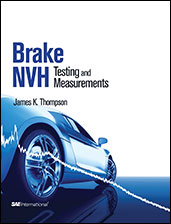Technical Paper
An Integrated Process for Moving Testing from the Track to the Laboratory
2002-03-19
2002-01-1483
There is a growing emphasis on the transfer of testing from the proving ground to the laboratory. The rapid evolution of test technology has been a key to making such transfers possible. This paper presents a description of the methods, including the critical data acquisition and the control parameter generation processes, developed to efficiently perform the move from the proving ground to the laboratory. Software tools are described that permit the user to collect vehicle control and response inputs on the road and convert these to test system control parameters. The process of collecting data is shown to be straight forward with a great deal of flexibility in terms of the type and number of channels to be collected. The conversion of these data to control parameters is described with examples. Parameters included in these studies include speeds, loads, vehicle inclination, accelerations, temperatures, torques, pedal positions, pedal force, time and distance.

